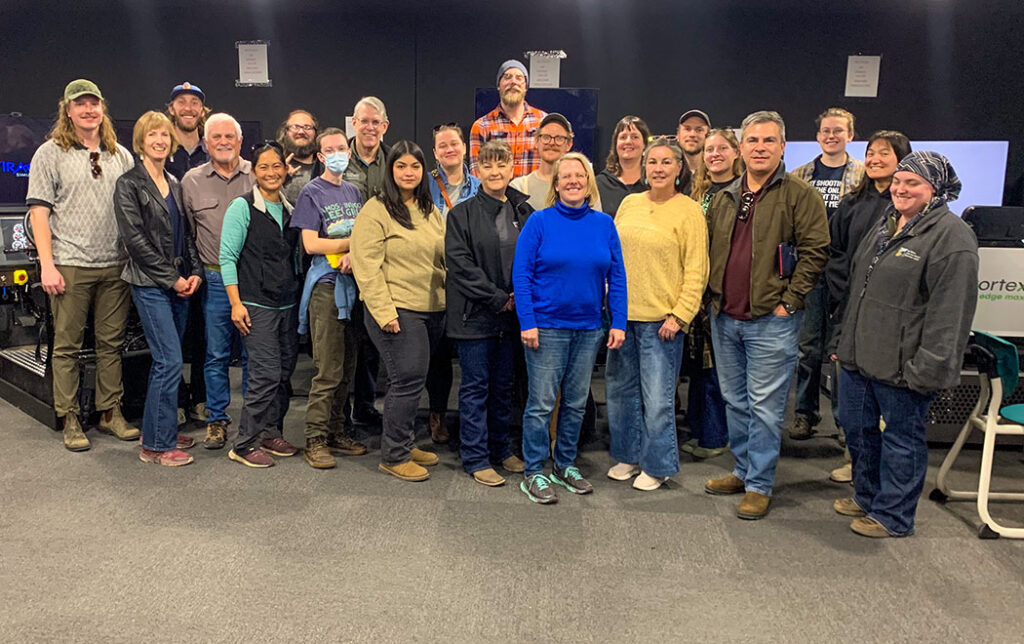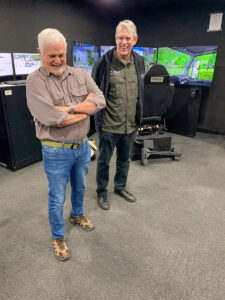
By Alan W. Barton, Director
As we begin 2025, NMFWRI is proud to announce that we are

entering our 20th year of working with New Mexicans to promote effective adaptive management of our state’s forests, and to carry out our mission of reducing the risk of large, uncharacteristic wildfires in New Mexico and the Southwest.
Looking back two decades, the early years of the 21st century brought a flurry of changes in forest policy, provoked by increasing concern about large wildfires. For much of the 20th century, when a wildfire broke out, forest managers sought to extinguish it as soon as possible. However, towards the end of the century, advocates for ecological forest management warned that fire suppression had dangerously increased the amount of fuel on many forested landscapes, and combined with changing weather patterns and extended drought, many parts of the U.S. faced a heightened risk of large, catastrophic wildfires. This was felt strongly in 2000—right at the dawn of the 21st century—as wildfires around the U.S. consumed some 6.5 million acres. This total included the devastating Cerro Grande Fire that burned over 43,000 acres in the Jemez Mountains near Los Alamos in the early summer, razing hundreds of homes and causing over $1 billion in damage. As these fires grew, so did pressure for a response from Washington.
At the request of President Bill Clinton, the federal Departments of Agriculture and Interior began formulating a national fire plan in August, 2000, building on a report on the 2000 fire season. They initiated planning focused not just on firefighting, but also hazardous fuel reduction, ecological rehabilitation, and assistance to communities at risk of wildland fires. Partnering with states and others, they issued the Ten Year Comprehensive Strategy in 2001, and in August, 2002, President George W. Bush committed his administration to the Healthy Forests Initiative. Congressional action followed, with the passage of the Healthy Forests Restoration Act in 2003 and the Tribal Forest Protection Act in 2004.
With this groundwork in place, the Arizona, New Mexico and Colorado Congressional delegations introduced legislation to put these policies into practice. In October, 2004, Congress passed the Southwest Forest Health and Wildfire Prevention Act (Public Law 108-317), creating the Southwest Ecological Restoration Institutes (SWERI). The Act specified that institutes would be located at Highlands University, Northern Arizona University, and Colorado State University. On February 20, 2005, the Forest Service formally designated these three institutes and on June 13, 2005, the Western Governors’ Association brought together the governors of the three states and presidents of the three universities to sign a Charter that established NMFWRI and its sister institutes as a federal-state partnership.
For the first decade, NMFWRI remained fairly small in size, averaging about six employees. Specialists in GIS, forest management, and forest operations partnered with various entities around the state and solidified a collaborative approach to forest restoration. In the second decade, NMFWRI has grown substantially, and today averages 25 staff members, with programs in GIS, ecological monitoring, collaboration, workforce development, education, and restoration-related research. With the added capacity, we have broadened our work to include pre-fire mitigation and post-fire recovery and restoration.
As we mark our 20th anniversary, NMFWRI’s work has only become more important and necessary as New Mexico continues to experience large and devastating wildfires. In 2022, wildfires consumed more than 900,000 acres in the state, and included the two largest fires in New Mexico’s history, the Hermit’s Peak-Calf Canyon fire that burned over 340,000 acres in the Sangre de Cristo Mountains just outside NMFWRI’s home community of Las Vegas, and the Black Fire, that charred 325,000 acres in the Gila National Forest. 2024 was another difficult fire year in the state, with 11 fires larger than 1,000 acres, including the Salt and South Fork Fires that damaged over 1,800 structures around the Village of Ruidoso on Lincoln National Forest and Mescalero Apache land, and led to devastating flooding that made national headlines.
We know that wildfire is a friend to healthy ecosystems, but a threat to unhealthy ones. Ordinary, low-intensity wildfires—those that tend to burn near the ground and that restore ecological balance—build resiliency into western forests. Carefully planned controlled burns can mimic these natural fires with similar outcomes. When ecosystems are managed in ways that disrupt their ordinary functioning, often because humans put profits ahead of other goals, then wildfires can pose a much greater threat to these ecosystems. This is when these fires become catastrophic, burning thousands of acres, often very quickly, and leaving a landscape that is much poorer in all respects. Unhealthy ecosystems are not resilient to the occasional disruptions presented by wildfire.
As we enter our third decade, the staff at NMFWRI will continue to work closely with our partners in the federal, state and local governments; non-governmental organizations; soil and water conservation districts; schools, colleges and universities, including our sister institutes in Arizona and Colorado; and the communities and landowners around our great state. Our goal is to work collaboratively to inspire healthier human and ecological communities that are adapted to wildfire. We value the opportunity to serve the people of New Mexico and to join with all our partners and friends as stewards of New Mexico’s landscapes and natural resources.
